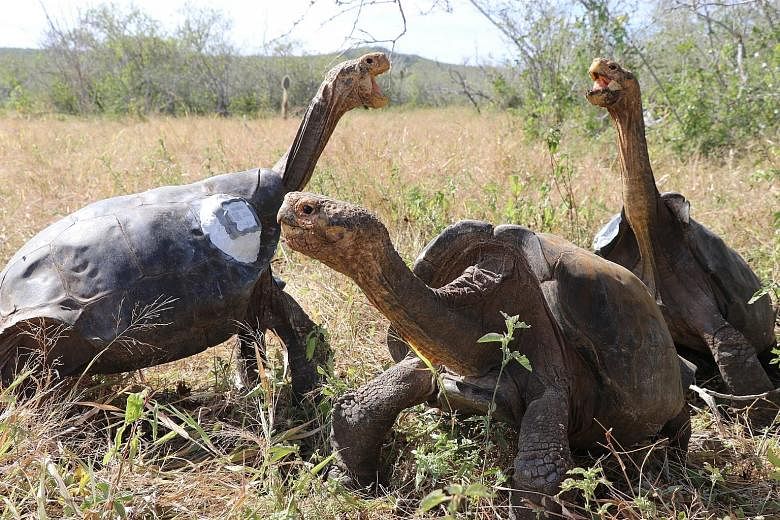A photo from the Galapagos National Park of giant tortoises which have lived in captivity for decades and helped rescue their species from the brink of extinction, and were released into the wild on the Galapagos Islands on Monday. The tortoises were bred in captivity to repopulate the islands after their numbers in the wild went down to just 15, said park director Danny Rueda. There are now over 2,000 of them on Espanola Island. The giant tortoises are known for their long, leathery necks and lifespans of over 100 years. Virtually synonymous with the Galapagos Islands off the coast of Ecuador, they were one of the species that helped Charles Darwin form his theory of evolution in the 19th century. One of the newly freed tortoises is Diego, estimated to be 100 years old. Reputed for his fertility, Diego alone has fathered some 800 offspring. His return to Espanola comes after around eight decades of living in a California zoo and then in the tortoise recovery programme on Santa Cruz island in the Galapagos.
Giant Galapagos tortoises head home after saving their species

Join ST's Telegram channel and get the latest breaking news delivered to you.
A version of this article appeared in the print edition of The Straits Times on June 18, 2020, with the headline Giant Galapagos tortoises head home after saving their species. Subscribe
